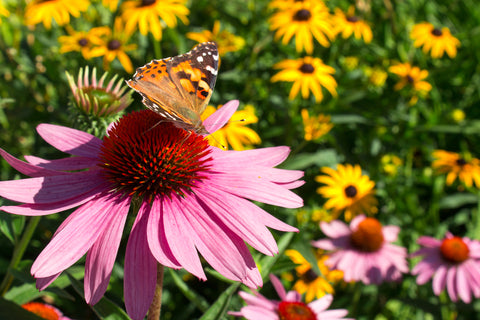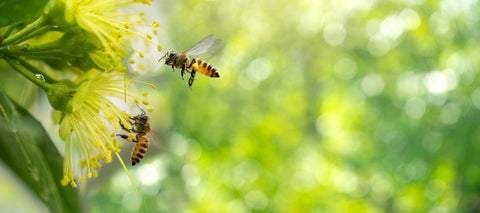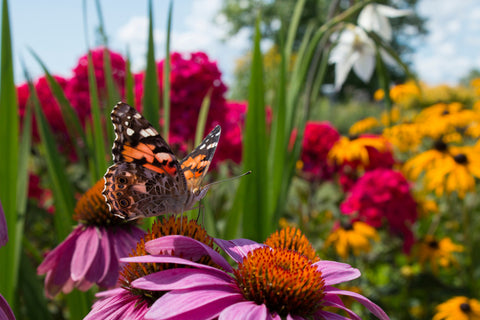Pollinators like butterflies and bees are certainly a thing of adoration. But more often than not, we dismiss their importance and tend to forget that they're the reason why our ecosystem continues to thrive and excel.
So, if we are aware of their significance and the role they so gracefully play - even if unknowingly so - what part can we play to protect the peace and be catalysts in nature's unexplainably effective processes? For starters, we believe, creating the perfect pollinator garden and encouraging pollination is something everyone can do!
• So, What Are Pollinator Gardens?

In short, a garden for pollinators is a deliberate design that aims at attracting and supporting pollinating insects such as bees, butterflies, and hummingbirds. These gardens are beneficial and crucial for biodiversity and ecosystem health.
Pollinator gardens provide vital habitats and nectar sources for these insects, supporting plant reproduction and agricultural productivity. By choosing the right pollinator plants, such as butterfly-attracting plants and other flowers for butterflies and bees, individuals can contribute to the conservation of pollinators and their importance to the ecosystem.
• Why are Pollinator Gardens Important?
Pollinator gardens play a vital role in safeguarding the environment and food supply chain. Here's why they're so beloved and important:

1. Biodiversity Boost
By providing a diverse array of flowering plants, pollinator gardens support a wide range of pollinators, thereby enhancing biodiversity.
2. Ecosystem Resilience
By now you must know that pollinators are super important in ecosystem dynamics, ensuring the reproduction of countless plant species. A decline in pollinator populations can destabilize ecosystems.
3. Food Production
Many crops rely on pollinators for fertilization. A healthy population of pollinators translates to improved crop yields and agricultural productivity.
• How Big Should a Garden for Pollinators Be?

The size of your pollinator garden can vary based on available space and resources. Even a small garden plot or a collection of containers can make a significant impact. Aim for a size that fits your capacity for maintenance and matches the available space, ensuring you can sustain it effectively.
• How to Start
1. Selecting the Site
Choose a sunny spot for your garden, preferably sheltered from strong winds. Ensure the area has good drainage to prevent waterlogging.

2. Choosing Plants
Opt for a variety of flowering plants that bloom at different times throughout the growing season. This ensures a continuous supply of nectar and pollen for pollinators. Native plants are particularly beneficial as they are well-adapted to the local ecosystem.
3. Plant Placement
Arrange plants in clusters rather than scattering them individually. This makes it easier for pollinators to locate and access their food sources.
4. Provide Water
Include a shallow water source like a birdbath or a saucer filled with pebbles to offer pollinators a place to drink and bathe.
5. Limit Chemical Use
Minimize or eliminate the use of pesticides and herbicides in and around the garden to protect pollinators from harmful chemicals.
• Best Plants for Pollinator Gardens

1. Indian borage (Plectranthus amboinicus)
2. Indian blanket flower (Gaillardia pulchella)
3. Indian rhododendron (Rhododendron arboreum)
4. Indian lilac (Melia azedarach)
5. Flowering herbs like basil, coriander, and mint
These native plants provide abundant nectar and pollen, attracting bees, butterflies, and other pollinators crucial for plant reproduction. Incorporating these species into a pollinator garden can create a thriving ecosystem while supporting local biodiversity.














